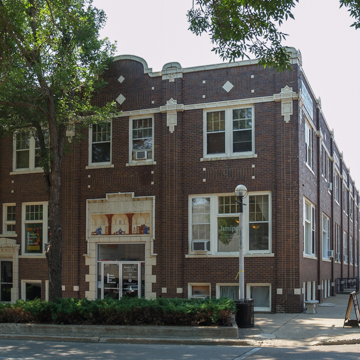After a history of destructive fires (1885, 1898, and 1920) at the Bismarck Tribune newspaper headquarters, editor George Douglas Mann hired a Great Falls, Montana, architect to design this fireproof building with a concrete frame and floors, structural clay tile walls, and Hebron pressed-brick exterior. The popular Prairie Style design emphasizes horizontal proportions and incorporates decorative brickwork with applied terra-cotta ornament with motifs of stylized lamps, flowers, leaves, and lotus buds. Brick header courses accent the pilasters that support rectangular spandrels between the first- and second-floor windows. A distinctive polychrome terra-cotta bas-relief panel above the main entrance reproduces a painting of monks practicing the printer’s craft on a hand press. The Bismarck Tribune Building has served as office space since the newspaper relocated its operations in 1981.
You are here
Bismarck Tribune Building
If SAH Archipedia has been useful to you, please consider supporting it.
SAH Archipedia tells the story of the United States through its buildings, landscapes, and cities. This freely available resource empowers the public with authoritative knowledge that deepens their understanding and appreciation of the built environment. But the Society of Architectural Historians, which created SAH Archipedia with University of Virginia Press, needs your support to maintain the high-caliber research, writing, photography, cartography, editing, design, and programming that make SAH Archipedia a trusted online resource available to all who value the history of place, heritage tourism, and learning.









